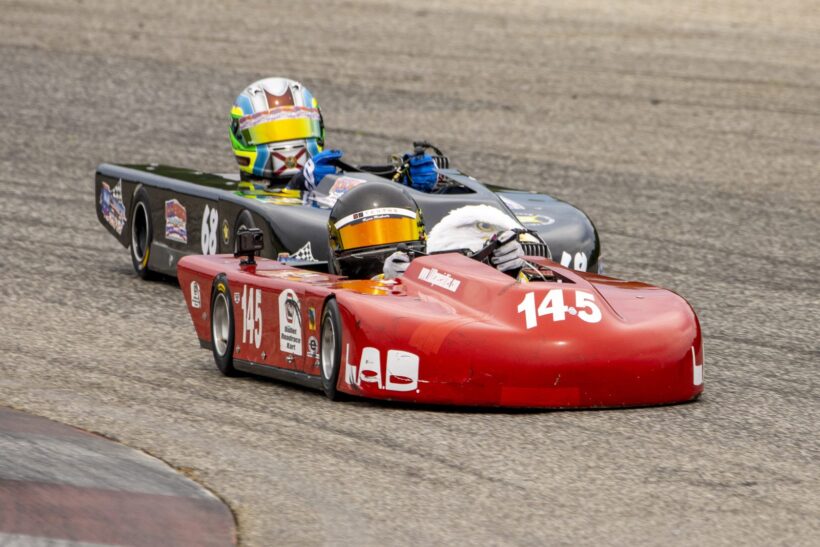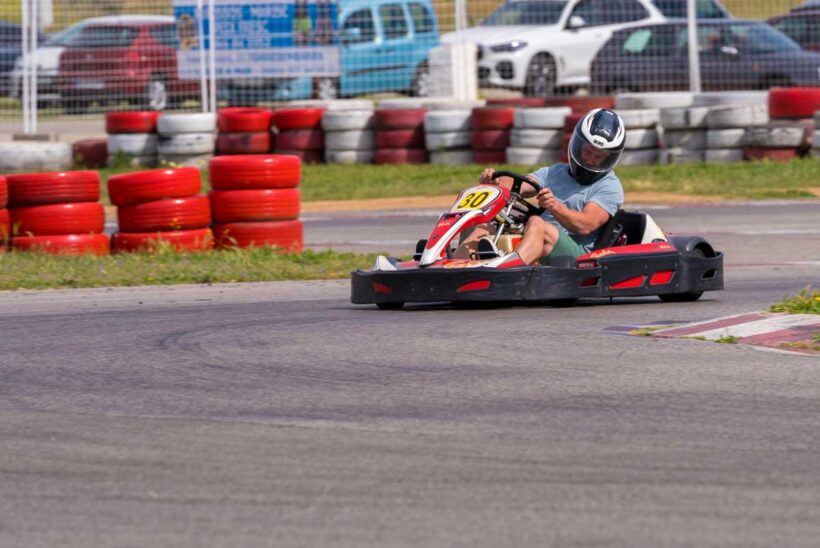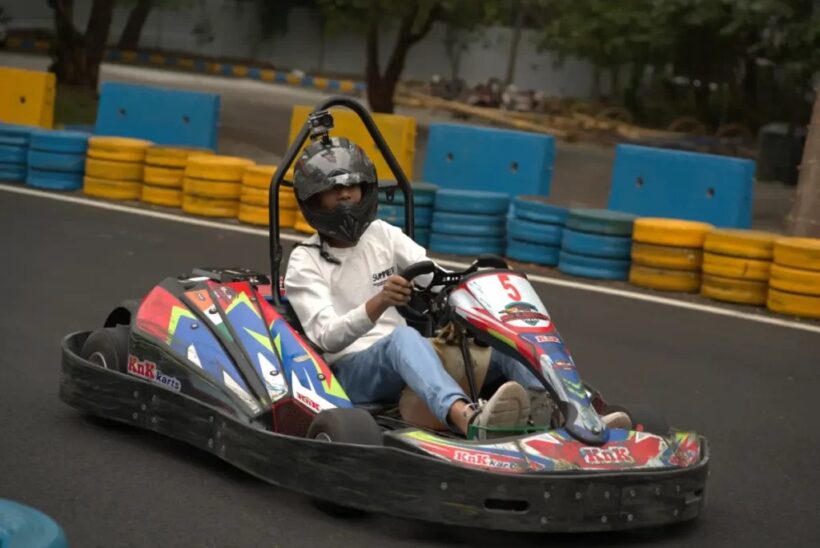Karting is a thrilling motorsport that offers excitement and fun for all ages.
It’s a fantastic way to get involved in racing, build driving skills, and enjoy the camaraderie of the karting community.
What to Know Before You Enroll?
Karting, often seen as the first step in motorsport, involves racing small, open-wheel vehicles called karts. It’s an accessible and thrilling sport that caters to a wide range of ages and skill levels.
Before diving in, it’s important to understand the basics and the different types of karting available. This knowledge will help you make informed decisions and maximize your enjoyment and progress in the sport.
Kart Types and Variations
Karting offers a variety of experiences, depending on the type of track and racing style. Here are the primary types of karting you might encounter:
Dirt Oval

Dirt oval karting involves racing on oval-shaped tracks made of dirt. This type of karting is known for its sliding turns, which require precise handling and control.
Drivers often need to master techniques such as throttle control and counter-steering to navigate the loose surface effectively.
The dirt track’s ever-changing conditions add an extra layer of challenge, making each race unique.
Asphalt Road Course
Asphalt road course karting takes place on paved circuits that can range from flat layouts to tracks with various elevations and turns. This type of karting is ideal for those looking to improve their driving precision and control.
Asphalt road courses demand smooth and accurate driving techniques, with a focus on braking points, cornering lines, and acceleration zones. These skills are directly transferable to higher levels of motorsport, making asphalt karting a popular choice for aspiring racers.
Enduro

Endurance karting, or Enduro, involves much longer races compared to typical sprint karting events. These races test both the durability of the kart and the stamina of the driver.
Enduro races can last several hours, sometimes even featuring driver changes during the race. This type of karting requires not only driving skill but also strategic planning and teamwork.
Pit stops for fuel, tire changes, and driver swaps add layers of complexity, making Enduro karting a comprehensive test of a racer’s abilities.
Finding Your Starting Point
Finding a nearby kart track is crucial as it will be your primary venue for practice and racing. Kart tracks vary, from small local circuits to large, professionally managed venues.
When visiting a track, observe the facilities, the types of karts used, and the level of competition. This will give you a sense of what to expect and help you decide if the track suits your needs.
Attending a race as a spectator is a great way to immerse yourself in the karting world.
You’ll witness firsthand the dynamics of kart racing, the excitement, and the community spirit. It’s also an excellent opportunity to interact with racers, ask questions, and gather valuable insights about the sport.
This experience can significantly enhance your understanding and spark your enthusiasm for karting.
Local kart shops are invaluable resources. They can provide expert advice on everything from choosing the right kart to essential maintenance tips. Building a relationship with the owners and staff can open doors to a wealth of knowledge and support.
They can also connect you with the local karting community, helping you integrate and progress in the sport more smoothly.
Getting Hands-On Experience

Now let us talk about hands-on experience.
Driving Schools and Test Drives
Before investing in your own kart, consider attending a driving school or scheduling a test drive. These programs offer a practical introduction to karting, allowing you to experience the thrill of driving without the immediate financial commitment.
Driving schools typically provide professional instruction, which can help you quickly grasp the basics and build confidence. Look for programs that offer comprehensive training and support for beginners.
Investing in Your First Kart
When you’re ready to purchase your first kart, budget carefully. Determine how much you’re willing to invest in the kart itself, safety gear, and ongoing maintenance.
You have options: buying new ensures you get the latest technology and a warranty, while purchasing used can be more cost-effective.
Essential gear includes a helmet, suit, gloves, and rib protector. Prioritize safety and quality when making these purchases to ensure a positive and secure karting experience.
Building Your Skills

Consistent practice is key to improving your karting skills. The more time you spend on the track, the better you’ll understand your kart’s handling and the nuances of driving. Focus on mastering the basics first, such as braking, cornering, and accelerating smoothly.
Gradually work on advanced techniques and try to practice in different conditions to enhance your adaptability.
Joining a local karting team can accelerate your learning and integration into the sport. Teams often provide shared resources, such as equipment and transport, and can offer coaching and support.
Being part of a team also means you’ll have a network of experienced drivers to learn from and compete with. This camaraderie can make the sport more enjoyable and help you progress faster.
Start with local club races to gain experience and build confidence. These races are typically less intense than national or international competitions, making them ideal for beginners.
As you gain experience and improve your skills, you can aim for higher-level competitions. Competing regularly will help you develop racecraft, refine your techniques, and enjoy the full excitement of karting.
Advanced Tips and Techniques
Understanding how to maintain and adjust your kart is crucial for performance. Basic maintenance includes regular checks of the engine, tires, and brakes.
Learning about gear ratios, tire pressures, and other technical aspects will help you optimize your kart’s performance for different tracks and conditions. Regular fine-tuning can make a significant difference in your results.
Karting in wet conditions requires a different driving style than in dry conditions. In the wet, focus on smooth inputs and finding the grip, which often means taking a different line through corners.
In dry conditions, you can be more aggressive with your inputs and push the kart closer to its limits.
Practicing in varied conditions will make you a more versatile and skilled driver.
Safety Considerations

Safety is paramount in karting. Invest in high-quality safety gear, including a helmet, rib protector, racing suit, gloves, and boots.
Always inspect your gear before use to ensure it’s in good condition. On the track, stay aware of your surroundings, respect other drivers, and follow all safety protocols.
Developing a safety-first mindset will help you avoid injuries and enjoy karting for years to come.
When you’re driving, whether it’s a kart or a car it’s important to always keep in mind that safety comes FIRST.
The Bottom Line
Getting started in karting is an exciting journey that involves understanding the sport, finding the right resources, and consistently practicing.
Take the first step, dive into the community, and enjoy the thrill of karting.

